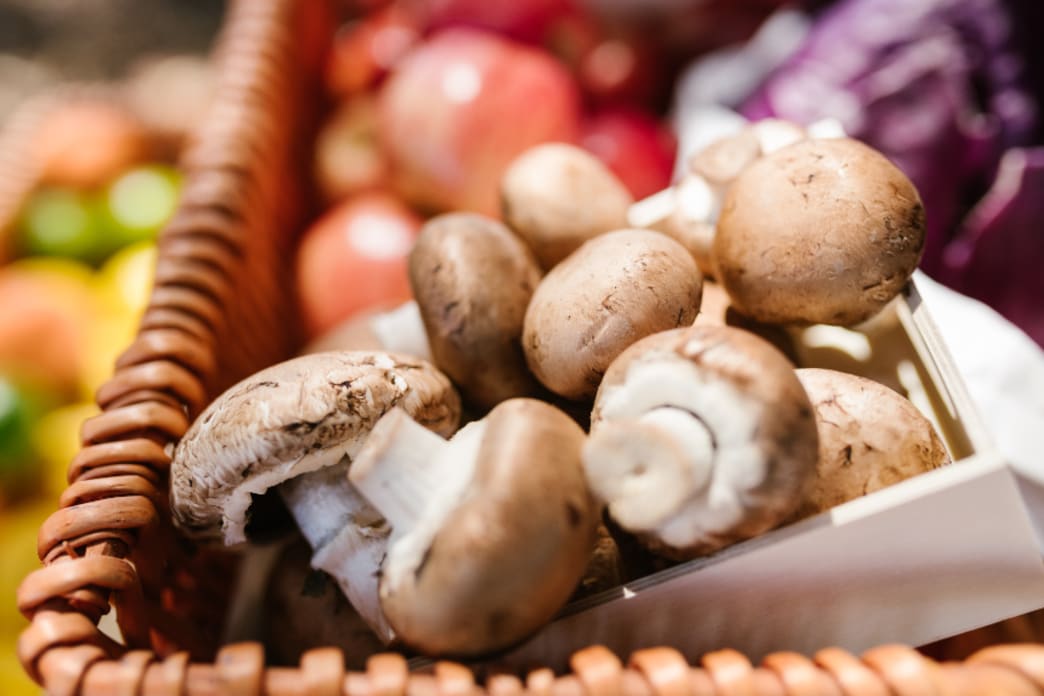Learn about the almond agaricus (Agaricus subrufescens), including some interesting information on this mushroom and how to start growing it at home
The almond agaricus (Agaricus subrufescens) is an unusual edible mushroom that has been grown in North America. It has also been found in other locations around the world, including Australia, Brazil, and Taiwan.
According to Agaricus subrufescens: A review, “Since its discovery in 1893, this mushroom has been cultivated throughout the world, especially in Brazil where several strains of A. subrufescens have been developed and used as health food and alternative medicine.”
This culinary delight can be found hidden away in the most unlikely of places, but once you find it, you will never forget its sweet smell (it smells like almonds!).
Like some oyster mushrooms and the wine cap mushroom, almond agaricus is a great option for growing in garden beds and compost piles. These will not grow on logs so developing beds for them is your best option. These are another species of mushroom that like it hot, so try these in warmer temperatures (70 degrees Fahrenheit and above). If you do buy spawn of this mushroom to grow, I’d recommend using all of the spawn, as you cannot keep it in refrigeration as you can with other species. The spawn of almond agaricus, like the pink oyster mushroom, will die at refrigeration temperatures.
If you are a fan of portobellos, criminis, or white button mushrooms, we’re confident that you’ll enjoy the almond agaricus.
Interesting information on the almond agaricus (Agaricus subrufescens)
We’ve been asked many times before if we sell spawn for the common button mushroom, crimini, or portobello. Ultimately, all of these mushrooms are Agaricus bisporus, and have varying names depending on their color and when they are harvested. For instance, when white and immature, this mushroom is often called the “white button mushroom.” When Agaricus bisporus is mature and brown, it is marketed by the name “portobello”, “portabello”, or “portabella”.
We don’t sell Agaricus bisporus spawn because we prefer to focus on more unique, more interesting, and more flavorful mushrooms, like oysters, shiitakes, lion’s mane, etc. However, the almond agaricus is similar to Agaricus bisporus, with more flavor.
According to Agaricus subrufescens: A review, “A. subrufescens was called the “almond mushroom” due to its almond taste, and cultivated and consumed in the Atlantic states of the United States from the late 19th to the early 20th century (Kerrigan, 2005).”
So if you like the common button mushroom AND the flavor of almonds, then we’re sure you’ll love the almond agaricus!
Understanding some health benefits of almond agaricus
This study on almond agaricus shares information on the mushroom’s chemical composition, stating:
“The fruiting bodies of A. subrufescens contain 89–91% water, which is in general less than that of A. bisporus. Almost 48% of total dry matter consists of crude protein and 18% of carbohydrates, but the lipid content is only 0.5% (Györfi et al., 2010). The fruiting bodies of A. subrufescens contain high levels of valuable minerals, e.g. potassium, phosphorus, calcium, magnesium and zinc. Nevertheless, a minute amount of cadmium was also detectable (Györfi et al., 2010).”
The study continues by mentioning some additional benefits to this mushroom.
“Various pharmaceutical activities have been found associated with A. subrufescens and researches to reveal the function of bioactive compounds are extensive. Recent studies have been performed in vitro and in vivo to confirm the mushrooms therapeutic properties (Firenzuoli et al., 2008). Identification of (novel) immunomodulating bioactive compounds from the mushroom may also help in new treatments for patients suffering from cancer and immunodeficiency (Ohno et al., 2001).”
Growing the almond agaricus (Agaricus subrufescens) at home
As mentioned above, this mushroom cannot be grown on logs like many other mushroom species. However, it is a great mushroom to grow on a composted substrate or a garden bed. You can use any old mushroom compost you have, or you can use decomposed plant matter. This mushroom likes some shade, so growing them under taller plants or trees is also possible. If you want to companion plant with this mushroom in your garden space, you can grow them around chard, lettuces, zucchini or tomatoes.
One bag of this sawdust spawn will allow you to inoculate a space about 16 square feet. Due to its love of warmer temperatures, this mushroom is a great option for growing in greenhouses or high tunnels.
Like other oyster mushrooms, this mushroom is a fast colonizer. If you inoculate your garden bed with these mushrooms in the spring (be sure to wait for after the last frost), you may be able to have fresh mushrooms fruiting by the end of the summer.
If you really love white button mushrooms, portobellos, or criminis, then you ought to try the almond agaricus. It will remind you of your love for the button mushroom, with a little extra flavor!

